Minister without portfolio
A minister without portfolio is either a government minister with no specific responsibilities or a minister who does not head a particular ministry. The sinecure is particularly common in countries ruled by coalition governments and a cabinet with decision-making authority wherein a minister without portfolio, while he or she may not head any particular office or ministry, still receives a ministerial salary and has the right to cast a vote in cabinet decisions. In some countries where the executive branch is not composed of a coalition of parties and, more often, in countries with purely presidential systems of government, such as the United States, the position (or an equivalent position) of minister without portfolio is uncommon.
Australia
- Stanley Bruce – former Prime Minister
Bangladesh
Bangladesh appoints ministers without portfolio during cabinet reshuffles or fresh appointments. Ministers are not usually appointed without portfolio as a coalition negotiation – all long run ministers end up with a portfolio. Suranjit Sengupta was a minister without portfolio in Sheikh Hasina's second government.[1]
Bulgaria
Canada
While minister without portfolio is seen by some as a mere sinecure appointment, it has been a role that numerous political notables have played over time, including former Prime Minister Jean Chrétien, who filled the role in a Pearson cabinet in the 1960s; John Turner also "kept a seat warm" in a Pearson cabinet. Notable Conservatives who filled the role include R. B. Bennett, and Arthur Meighen; however, Meighen served this role after he had been prime minister.
The title of minister without portfolio has been used off and on; in recent times, though, the title has fallen out of favour, and the last minister without portfolio, Gilles Lamontagne, was promoted to postmaster general in 1978. The practice has continued under the guise of ministers of state without responsibilities in the ministers' titles.
The position has also been filled on the federal or provincial level by experienced politicians near the end of their careers as a way of allowing them to counsel the government and take on projects without the burdens associated with administering a government department.
Croatia
|
Deputy Prime Ministers without portfolio
|
Denmark
Three "control ministers" served as ministers without portfolio during World War I.
After the Liberation of Denmark in May 1945, the first Danish cabinet included four ministers without portfolio. Among these were Danish ambassador to the U.S. Henrik Kauffmann, who had conducted his own foreign policy throughout the war and refused to follow orders from Copenhagen as long as Denmark remained occupied by a foreign power. Kauffmann served in this capacity from 12 May to 7 November 1945. The three other holders of this title had joined the cabinet a few days before - Aksel Larsen (Communist Party of Denmark), Kr. Juul Christensen (Danish Unity) and Frode Jakobsen (Social Democrats).
Lise Østergaard held a position as minister without portfolio with special attention to foreign policy issues in Anker Jørgensen's cabinet from 26 February 1977 to 28 February 1980.
Anders Fogh Rasmussen appointed Bertel Haarder to Minister without Portfolio, but effectively Minister for European Affairs. Haarder served in this capacity from 27 November 2001 to 18 February 2005. The reason for appointing a minister without a ministry was the Danish European Union Presidency of 2002. Haarder was considered the most experienced Danish politician on European affairs.
Germany
- Hermann Göring (1933)
- Rudolf Hess
- Arthur Seyss-Inquart (1939–1945)
- Hjalmar Schacht (1939–1943)
Since 1949, a Federal Minister for Special Affairs (Bundesminister für besondere Aufgaben) is a member of the Federal Government that does not have charge of a Federal Ministry, although some have simultaneously been Chief of the Federal Chancellor's Office.
Hungary
India
Ireland
The Ministers and Secretaries (Amendment) Act, 1939 (Section 4) allows a member of the Government of Ireland not to have charge of a Department of State; such a person is referred to as a "Minister without portfolio" (Irish: Aire gan Cúram Roinne[2]). Such a minister may nevertheless be given a specific title. The only substantive minister without portfolio has been Frank Aiken, the Minister for the Co-ordination of Defensive Measures during World War II.[3] By the Emergency Powers Act 1939 then in force, the Minister for Defence was able to delegate some competences to him.[4][5] Such delegation is now done instead with Ministers of State: "junior ministers" who are not members of the government. Junior ministers can be given a right to sit at cabinet; they are often known colloquially as "super-juniors." This allows the Government to circumvent the Constitutional limit on the number of Senior Ministers.
On several occasions a minister has been appointed to an incoming government with the title of a new Department of State. Between the date of appointment and the date of creation of the department, such a minister was technically a minister without portfolio.[6] Examples include:
| Title | Govt | Minister | Appt to govt | Dept created | Dept |
|---|---|---|---|---|---|
| Minister of Economic Planning and Development | 21st Dáil | Martin O'Donoghue | 8 July 1977[7][8] | 13 December 1977[9][10] | Department of Economic Planning and Development |
| Minister for Public Expenditure and Reform | 31st Dáil | Brendan Howlin | 9 March 2011[11] | 6 July 2011[12][13] | Department of Public Expenditure and Reform |
Israel
It is common practice in Israel to appoint ministers without portfolio as part of the coalition negotiations. All cabinets in recent years have had at least some such appointment. The Governance Law passed in 2013 forbade Ministers Without Portfolio effectively ending the practice, however in spite of some objections, after the 2015 elections this issue was revisited in the Knesset and it was allowed for the practice to resume. The full alphabetical list of Ministers without Portfolio since 1949 is:
Italy
In the Italian government, Ministers without Portfolio are nominated by the President of the Council of Ministers (Prime Minister) and formally appointed by the President of the Republic to lead particular departments directly under the Presidency (or Presidium) of the Council of Ministers. Unlike the office of State Undersecretary to the Presidency, who fulfils duties in the Prime Minister's remit, Ministers without Portfolio enjoy the full status of ministers but do not lead an independent ministry. Departments on equalities, European affairs and relations with regions, for example, are usually led by ministers without portfolio.
The Monti Cabinet had 6 ministers without portfolio:
- Dino Piero Giarda (Relations with Parliament)
- Fabrizio Barca (Territorial cohesion)
- Piero Gnudi (Regional affairs, Tourism and Sport)
- Enzo Moavero Milanesi (European affairs)
- Andrea Riccardi (Integration and International cooperation)
- Filippo Patroni Griffi (Public Administration and Law simplification)
The Letta Cabinet had 8 ministers without portfolio:
- Josefa Idem (Equal opportunities, Sport and Youth policy; resigned in June)
- Cécile Kyenge (Integration and Youth Policy)
- Giampiero D'Alia (Public Administration)
- Dario Franceschini (Relations with Parliament)
- Enzo Moavero Milanesi (European affairs)
- Graziano Delrio (Regional affairs and Sport)
- Carlo Triglia (Territorial cohesion)
- Gaetano Quagliariello (Constitutional reforms)
The Renzi Cabinet has 3 ministers without portfolio:
- Maria Elena Boschi (Constitutional Reforms and Parliamentary Relations)
- Marianna Madia (Simplification of Public Administration)
- Maria Carmela Lanzetta (2014-2015)[14] (Regional Affairs)
Former Yugoslavian Republic of Macedonia
As of 2012, ministers without portfolio (министер без ресор) are:
- Hadži Neziri
- Nedžet Mustafa
- Vele Samak
- Bil Pavleski
Malta
- Joe Mizzi (1996 - 1998)
- Konrad Mizzi (2016 - )
Nepal
Dr. Ram Sharan Mahat.[15]
Netherlands
A Minister without Portfolio in the Netherlands is a minister that does not head a specific ministry, but assumes the same power and responsibilities as a minister that does. The minister is responsible for a specific part of another minister's policy field. In that sense, a minister without portfolio is comparable to a staatssecretaris (state secretary/junior minister) in Dutch politics, who also falls under another ministry and is responsible for a specific part of that minister's policy field. However, one distinct difference is the fact that a minister without portfolio is a member of the council of ministers and can vote in it, whereas a state secretary is not. The minister for development cooperation has always been a minister without portfolio.
In the second Balkenende cabinet there were three ministers without portfolio: Agnes van Ardenne (Development Cooperation), Rita Verdonk (Integration and Immigration) and Alexander Pechtold (Government Reform and Kingdom Relations).
In the fourth Balkenende cabinet there were three ministers without portfolio: Eberhard van der Laan (Housing, Neighbourhoods and Integration), Bert Koenders (Development Cooperation) and André Rouvoet, Deputy Prime Minister and Minister of Youth and Family.
The second Rutte cabinet has two ministers without portfolio: Stef Blok (Housing and the Central Government Sector) and Lilianne Ploumen (Development Cooperation).
New Zealand
In the First Labour Government from 1935 the Hon. Mark Fagan was a "Minister without Portfolio" from 1935 to 1939, as was the Hon. David Wilson from 1939 to 1949. They were appointed to the upper house and made a "minister without portfolio" to add them to the cabinet although neither were elected to a seat in Parliament.
In the Third National Government, Keith Holyoake was made a Minister of State 1975–77 after he had retired as party leader, and in the Fourth National Government Robin Gray was made a Minister of State 1993–96 after he had retired as Speaker (though he was also Associate Minister of Foreign Affairs). Both appointments were considered sinecures to avoid their return as 'backbenchers'.
Norway
From 2009 to 2013 Karl Eirik Schjøtt-Pedersen (Labour) was a Minister without Portfolio and Chief of Staff in the Prime Ministers Office, where his job was to co-ordinate within government.
Philippines
During the Japanese Occupation of the Philippines, then-Senate President Manuel Roxas was appointed Minister without Portfolio by the Japanese Government.
Portugal
Following the Carnation revolution, several politicians were made ministers without portfolio:
- Álvaro Cunhal (1st, 2nd, 3rd, 4th provisional government)
- Ernesto Melo Antunes (2nd, 3rd provisional government)
- Francisco Pereira de Moura (1st, 4th provisional government)
- Francisco Sá Carneiro (1st provisional government)
- Joaquim Magalhães Mota (2nd, 3rd, 4th provisional government)
- Jorge Campinos (1st constitucional government)
- Mário Soares (4th provisional government)
- Vítor Alves (2nd, 3rd provisional government)
Serbia
From 2007 to 2008, Dragan Đilas was a "minister without portfolio" in charge of the National Investment Plan.
Taiwan
In the Executive Yuan of the Taiwan there are several such ministers, at one time. Currently, the ministers without portfolio are:[16]
- Audrey Tang
- Chang Ching-sen, also serving as Governor of Fujian Province
- Chen Tain-jy, also serving as Minister of National Development Council
- Hsu Jan-yau, also serving as Governor of Taiwan Province
- John Deng
- Lin Mei-chu, also serving as the Minister of Mongolian and Tibetan Affairs Commission
- Lin Wan-i
- Wu Hong-mo, also serving as Minister of Public Construction Commission
- Wu Tsung-tsong
Sweden
- Dag Hammarskjöld (1951–1953).
- Olof Palme (1963–1965).[17]
Tanzania
President Jakaya Kikwete appointed Professor Mark Mwandosya as a minister without portfolio in 2012.
United Kingdom
In the United Kingdom, it is often a cabinet position, and is sometimes used to get people such as the Chairman of the Conservative Party or the Labour Party Chairman into cabinet meetings (if so, they hold the title of "Party Chairman"). The sinecure positions of Lord Privy Seal and Chancellor of the Duchy of Lancaster which have few responsibilities and have a higher rank in the Order of Precedence than Minister without Portfolio can also be used for similar effect. The position has been referred to humorously as The Minister for Ministerial Affairs.
19th century
Edwardian and wartime
| Name | Portrait | Concurrent office(s) | Tenure | Political party | Prime Minister | ||
|---|---|---|---|---|---|---|---|
| Henry Petty-Fitzmaurice, 5th Marquess of Lansdowne | 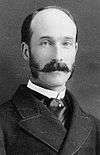 |
25 May 1915 – December 1916 | Liberal Unionist | H. H. Asquith (Coalition) | |||
| Arthur Henderson | 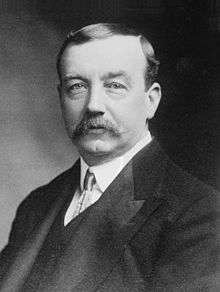 |
Member of the War Cabinet | 10 December 1916 – 12 August 1917 | Labour | David Lloyd George (Coalition) | ||
| Alfred Milner, 1st Viscount Milner |  |
10 December 1916 – 18 April 1918 | Conservative | ||||
| Jan Smuts | 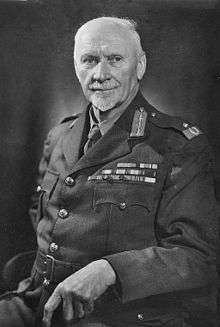 |
22 June 1917 – 10 January 1919 | South African Party | ||||
| Edward Carson |  |
17 July 1917 – 21 January 1918 | Ulster Unionist Party (Irish Unionist) | ||||
| George Barnes | 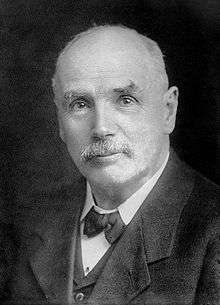 |
Member of the War Cabinet (until October 1919) | 13 August 1917 – 27 January 1920 | Labour | |||
| Austen Chamberlain |  |
Member of the War Cabinet | 18 April 1918 – 10 January 1919 | Conservative | |||
| Eric Campbell Geddes |  |
10 January – 31 October 1919 | |||||
| Laming Worthington-Evans |  |
Member of the War Cabinet (until October 1919) | 10 January 1919 – 13 February 1921 | ||||
| Christopher Addison |  |
1 April – 14 July 1921 | Liberal | ||||
| Anthony Eden |  |
Minister for League of Nations affairs | 7 June – 22 December 1935 | Conservative | Stanley Baldwin (Coalition) | ||
| Eustace Percy | 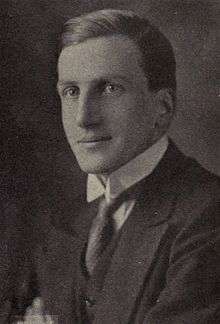 |
7 June 1935 – 31 March 1936 | |||||
| Leslie Burgin | Minister of Supply-designate | 21 April – 14 July 1939 | National Liberal Party | Neville Chamberlain (Coalition) | |||
| Maurice Hankey |  |
Member of the War Cabinet | September 1939 – 10 May 1940 | no party | Neville Chamberlain (Coalition) | ||
| Arthur Greenwood | 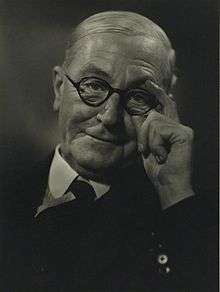 |
11 May 1940 – 22 February 1942 | Labour | Winston Churchill (Coalition) | |||
| William Jowitt | 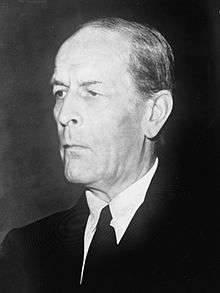 |
30 December 1942 – 8 October 1944 | |||||
Post-War
| Name | Portrait | Concurrent office(s) | Tenure | Political party | Prime Minister | |||
|---|---|---|---|---|---|---|---|---|
| A. V. Alexander | 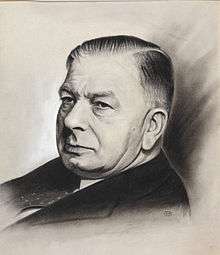 |
4 October – 20 December 1946 | Labour Co-operative | Clement Attlee | ||||
| Arthur Greenwood |  |
17 April – 29 September 1947 | Labour | |||||
| Geoffrey FitzClarence, 5th Earl of Munster | 18 October 1954 – 1957 | Conservative | Winston Churchill | |||||
| Anthony Eden | ||||||||
| Stormont Mancroft, 2nd Baron Mancroft | 11 June 1957 – 1958 | Harold Macmillan | ||||||
| Henry Scrymgeour-Wedderburn, 11th Earl of Dundee | 23 October 1958 – 1961 | Unionist | ||||||
| Percy Mills, 1st Baron Mills | Deputy Leader of the House of Lords | 9 October 1961 – 14 July 1962 | Conservative | |||||
| Bill Deedes | 13 July 1962 – 16 October 1964 | |||||||
| Alec Douglas-Home | ||||||||
| Peter Carington, 6th Baron Carrington | |
Leader of the House of Lords | 20 October 1963 – 16 October 1964 | |||||
| Eric Fletcher | 19 October 1964 – 6 April 1966 | Labour | Harold Wilson | |||||
| Arthur Champion, Baron Champion | Deputy Leader of the House of Lords | 21 October 1964 – 7 January 1967 | ||||||
| Douglas Houghton | 6 April 1966 – 7 January 1967 | |||||||
| Edward Shackleton, Baron Shackleton | Deputy Leader of the House of Lords | 7 January 1967 – 16 January 1968 | ||||||
| Patrick Gordon Walker |  |
7 January – 21 August 1967 | ||||||
| George Thomson | 17 October 1968 – 6 October 1969 | |||||||
| Peter Shore | 6 October 1969 – 19 June 1970 | |||||||
| Niall Macpherson, 1st Baron Drumalbyn | 15 October 1970 – 1974 | Unionist | Edward Heath | |||||
| Morys Bruce, 4th Baron Aberdare | 8 January – March 1974 | Conservative | ||||||
| David Young, Baron Young of Graffham | 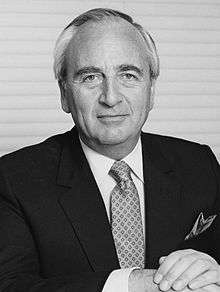 |
advising on unemployment | 11 September 1984 – 3 September 1985 | Margaret Thatcher | ||||
| Jeremy Hanley | Chairman of the Conservative Party | 20 July 1994 – 5 July 1995 | ||||||
| Brian Mawhinney | 5 July 1995 – 2 May 1997 | |||||||
| Peter Mandelson | |
called the "Dome Secretary" | 2 May 1997 – 27 July 1998 | Labour | Tony Blair | |||
21st century
| Name | Portrait | Concurrent office(s) | Tenure | Political party | Prime Minister | ||
|---|---|---|---|---|---|---|---|
| Charles Clarke | 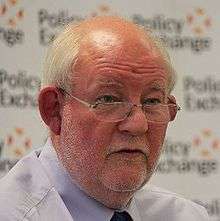 |
Labour Party Chair | 9 June 2001 – October 2002 | Labour | Tony Blair | ||
| John Reid | 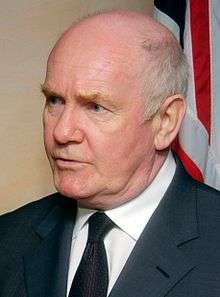 |
24 October 2002 – April 2003 | |||||
| Ian McCartney | 4 April 2003 – May 2006 | ||||||
| Hazel Blears |  |
5 May 2006 – June 2007 | |||||
| no appointment | 28 June 2007 – May 2010 | Gordon Brown | |||||
| Sayeeda Warsi, Baroness Warsi |  |
Co-Chairman of the Conservative Party | 12 May 2010 – September 2012 | Conservative | David Cameron (Coalition) | ||
| Grant Shapps | 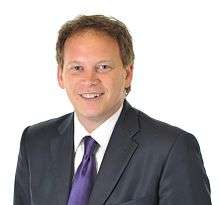 |
4 September 2012 – May 2015 | |||||
| Ken Clarke |  |
trade envoy | 4 September 2012 – July 2014 | ||||
| John Hayes |  |
Senior Parliamentary Adviser to the Prime Minister (Cabinet Office) | 28 March 2013 – July 2014 | ||||
| Robert Halfon |  |
Deputy Chairman of the Conservative Party | 11 May 2015 – 17 July 2016 | David Cameron | |||
There is at present no appointed minister without portfolio in the British government, under the Premiership of Theresa May.
United States
In the United States, an individual who has great influence on government affairs without holding formal office might be described as a "minister without portfolio". Such an appellation is completely unofficial (possibly intended jokingly or disparagingly) and merely serves to underscore the extent of the individual's already-existing influence; it does not grant any new influence or power. Examples include Bernard Baruch[18] and Arthur Burns.[19]
As the Vice President of the United States has little formal power but can influence policy insofar as the president allows,[20] the role of vice president is similar to that of a minister without portfolio.
Uganda
Since 2015, the cabinet list has included a minister without portfolio:
- Abraham Byandala - 2015 until 2016
- Abdul Nadduli - 2016 to present
References
- ↑ "Bangladesh's PM Sheikh Hasina keeps Home, Foreign Affairs, Defence portfolios". economictimes.indiatimes.com. PTI. Retrieved 2 February 2016.
- ↑ "Minister without Portfolio". Focal. Foras na Gaeilge. Retrieved 8 May 2012.
- ↑ Chubb, Basil (1982). Government & Politics of Ireland (2nd ed.). Stanford University Press. p. 170. ISBN 0-8047-1115-1.
- ↑ "Emergency Powers Act, 1939; §6 Delegation of statutory powers and duties". Irishstatutebook.ie. Retrieved 2016-07-27.
- ↑ "S.I. No. 157/1944 — Air-Raid Precautions (Approval of Expenditure by Essential Undertakers) (Amendment) (No. 2) Regulations, 1944". Irishstatutebook.ie. Retrieved 2016-07-27.
- ↑ "Ministers and Secretaries (Amendment) Bill, 1977: Fifth Stage.". Dáil debates. Oireachtas. 10 November 1977. Retrieved 8 May 2012.
The Minister for Economic Planning and Development is a member of the Government not having charge of a Department of State, who is therefore, under section 4 (2) of the Ministers and Secretaries (Amendment) Act 1939 a Minister without portfolio. His title is not derived from the title of a Department of which he is head, because it does not exist, but it is a title that has been assigned to him by the Government pursuant to section 4 (3) of the 1939 Act.
- ↑ "Appointment of Taoiseach and Nomination of Members of Government.". Dáil debates. Oireachtas. 5 July 1977. Retrieved 8 May 2012.
- ↑ "Mr. Martin O'Donoghue". Dáil Éireann Members Database. Oireachtas. Retrieved 8 May 2012.
- ↑ "Ministers and Secretaries (Amendment) Act, 1977 Section 2". Irish Statute Book. Attorney General. 6 December 1977. Retrieved 8 May 2012.
- ↑ "S.I. No. 377/1977 — Ministers and Secretaries (Amendment) Act, 1977 (Appointed Day) Order, 1977.". Irish Statute Book. Attorney General. 9 December 1977. Retrieved 8 May 2012.
- ↑ "Appointment of Ministers and Ministers of State". Dáil debates. 15 March 2011. Retrieved 8 May 2012.
- ↑ "Ministers and Secretaries (Amendment) Act 2011, Section 7". Irish Statute Book. Dublin: Attorney General. 4 July 2011. Retrieved 8 May 2012.
- ↑ "S.I. No. 401/2011 — Ministers and Secretaries (Amendment) Act 2011 (Appointed Day) Order 2011.". Irish Statute Book. Dublin: Attorney General. Retrieved 8 May 2012.
- ↑ "Decreto del Presidente della Repubblica 30 gennaio 2015 - Accettazione delle dimissioni della dott.ssa Maria Carmela LANZETTA dalla carica di Ministro senza portafoglio. (15A00810) (GU Serie Generale n.27 del 3-2-2015)". The official website of the Gazzetta Ufficiale.
- ↑ "Congress leader Mahat to join cabinet". Setopati.net. 2014-02-11. Retrieved 2016-07-27.
- ↑ "Premier-designate finalizes his Cabinet lineup". Focustaiwan.tw. 2016-04-28. Retrieved 2016-07-27.
- ↑ "Olof Palme". Government Offices of Sweden. 27 February 2016.
he was a minister without portfolio from 1963 to 1965
- ↑ Bauman, Michael (1984-06-27). "Mysterious Baruch". Milwaukee Journal. p. 18. Retrieved 31 March 2012.
- ↑ "The Administration: Minister Without Portfolio". Time. 1969-02-07. Retrieved 31 March 2012.
- ↑ Baumgartner, Jody C. (1 Jan 2006). The American Vice Presidency Reconsidered. Greenwood Publishing Group. p. 127. ISBN 9780275988906.
External links
- List of Canadian Ministers Without Portfolio and Ministers of State (Parliament of Canada Website)
- Taiwanese Ministers Without Portfolio




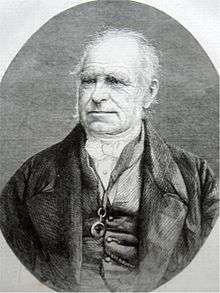


.jpg)